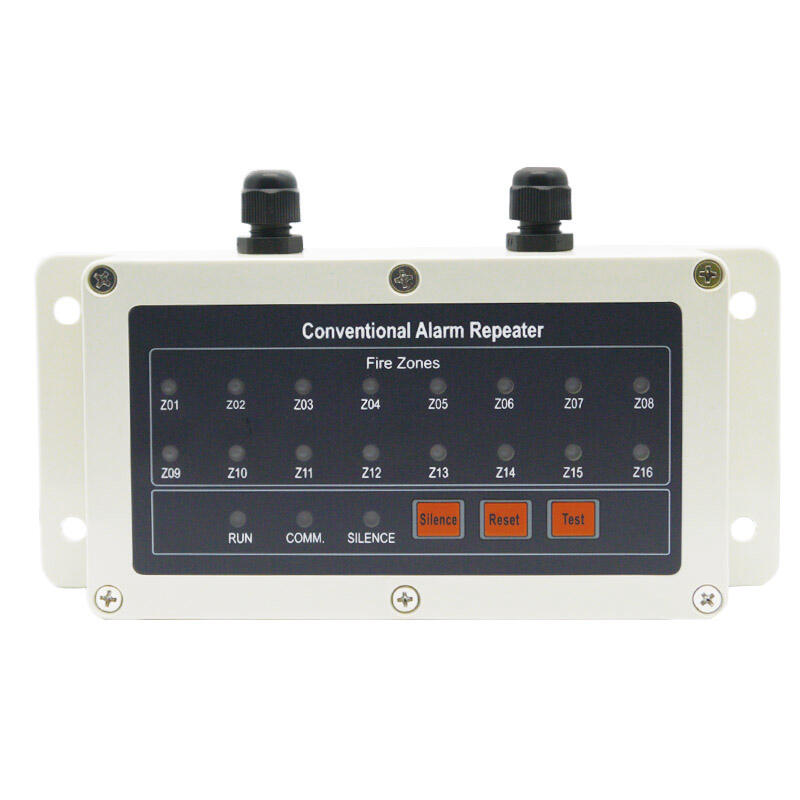Signal transmission plays a pivotal role in fire safety by ensuring swift communication between fire alarms and the main control panel, which is crucial during emergencies. In life-threatening situations, the difference in response time can be significant; hence, the reliability and speed of signal transmission are paramount. Studies indicate that effective signal transmission can reduce the alert response time by up to 30%, highlighting its critical role in emergency management. Utilizing robust conventional alarm repeaters within a fire alarm system is an effective strategy to safeguard employees and assets in these critical moments.
Understanding the key components of a conventional alarm repeater, including the main control board, signaling devices, and connection interfaces, is essential for maintaining smooth operation. These elements work harmoniously to relay alarms, preventing system failures and avoiding false alarms. Fire safety standards stress the importance of using quality components to ensure system integrity and optimum performance. With robust circuitry as a foundation, businesses can rely on efficient fire alarm installation for enhanced safety and minimized potential risks. Investing in well-made repeaters is paramount for resilient fire protection.
A wired infrastructure is often preferred for data transfer within fire alarm systems due to its superior reliability over wireless options. This is mainly because wired connections, such as those using fire-resistant cables, are less prone to interference and signal loss. In critical settings, using high-quality cabling and connectors ensures uninterrupted signal relay, a vital feature during emergencies. Fire alarm system installation typically follows stringent guidelines to maintain system integrity, which is crucial for effective emergency responses in high-stress situations. This approach ensures continuous and reliable data relay across the fire alarm system, thereby enhancing overall operational reliability.
Conventional alarm repeaters are meticulously crafted to provide real-time data transmission, a critical feature for effective monitoring and emergency response in fire alarm systems. They ensure immediate notifications of fire incidents, facilitating swift evacuations and emergency reactions to potential threats, thus significantly enhancing building safety. Studies have demonstrated that real-time transmission systems improve overall safety outcomes, illustrating the importance of this capability in emergency scenarios.
Alarm repeaters offer seamless integration with existing fire alarm systems, elevating functionality and providing comprehensive protection. Their compatibility across various fire alarm models ensures scalability in larger buildings, supporting complex setups seamlessly. Data underscores that integrated systems are less prone to failures, a testament to their cohesive operation and robust safety networks designed to maintain consistent emergency readiness.
Redundancy in alarm repeaters is a vital feature, as it ensures continuous operation even if one part of the system fails, maintaining reliable signal communication. This redundancy, complemented by back-up systems, decreases the likelihood of human error and operational lapses during emergencies. Studies highlight that redundant systems significantly reduce the risk of total operational failure, emphasizing their importance in bolstering safety measures designed to ensure uninterrupted emergency response.
Strategic placement of alarm repeaters is crucial to ensure maximum coverage and prevent areas where alarms might go unnoticed, also known as dead zones. By effectively positioning the repeaters, you ensure that the alarm signals reach every part of a building. Studies indicate that such strategic placement can enhance the efficacy of alarm systems by over 20%. Utilizing statistical methods for analyzing building layouts and identifying potential obstructions helps in deciding optimal positions for these repeaters, ultimately improving the fire alarm installation outcomes.
Before the installation of new alarm repeaters, conducting compatibility checks with existing fire alarm systems is vital. Ensuring seamless operation is critical to avoid system failures during emergencies. Compatibility issues can lead to failures in data transmission, which could be life-threatening during fire incidents. Research highlights that a significant number of fire alarm failures during emergencies are linked to inadequate integration efforts, underscoring the importance of thorough compatibility assessments as part of the fire alarm system installation process.
Routine testing and updates are fundamental to maintaining the functional integrity of alarm systems. A regular maintenance schedule allows for the early identification and resolution of potential issues, ensuring reliability and operational efficiency of the systems. Industry standards typically recommend inspecting and updating fire safety systems at least twice a year. This practice is essential for upholding fire safety standards and ensuring that all alarm system components work as intended, thereby reducing the risk of system failure during emergencies.
Understanding the technical specifications of conventional fire alarm repeaters, including signal range and power requirements, is crucial for selecting the right system. The signal range of a repeater can substantially affect the effectiveness of a fire alarm system, particularly in large buildings where the distance between repeaters may impede rapid alert distribution. Studies and comparative analyses show that higher signal ranges are associated with fewer alert failures. This underscores the importance of selecting powerful repeaters that can effectively cover vast spaces, ensuring robust fire alarm system performance.

Proper installation of conventional fire alarm repeaters is pivotal for their effective operation, involving strict adherence to cabling types, power needs, and addressing methods. Cabling, often using screened two-wire fire-resistant cables, ensures secure communication, while power specifications include operating voltages within safety standards. Addressing is critical for allowing seamless communication between system components, especially during emergencies. Adhering to installation guidelines on cabling, power, and addressing ensures operational compliance and maximizes efficiency within fire alarm networks.
Compliance with fire safety standards is essential for conventional alarm repeaters to perform effectively during emergencies. Meeting these standards not only boosts reliability but also minimizes liability risks associated with fire incidents. The National Fire Protection Association (NFPA) sets key guidelines adhered to by manufacturers to ensure the safety and functionality of fire alarm systems. By following these standards, conventional fire alarm repeaters contribute significantly to maintaining a safe environment, enhancing the overall operational efficiency of fire safety systems.

Copyright © 2024 RISOL TECH LTD All Rights Reserved Privacy policy